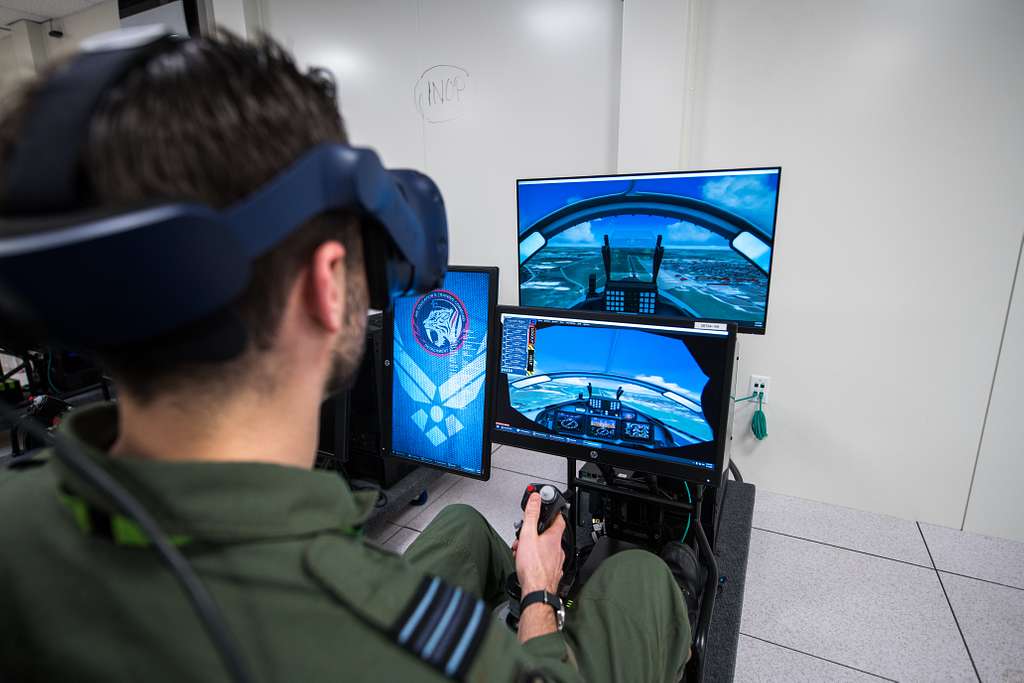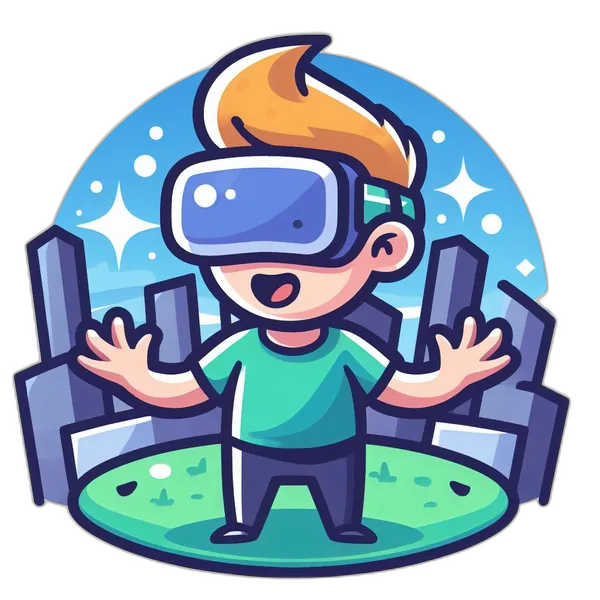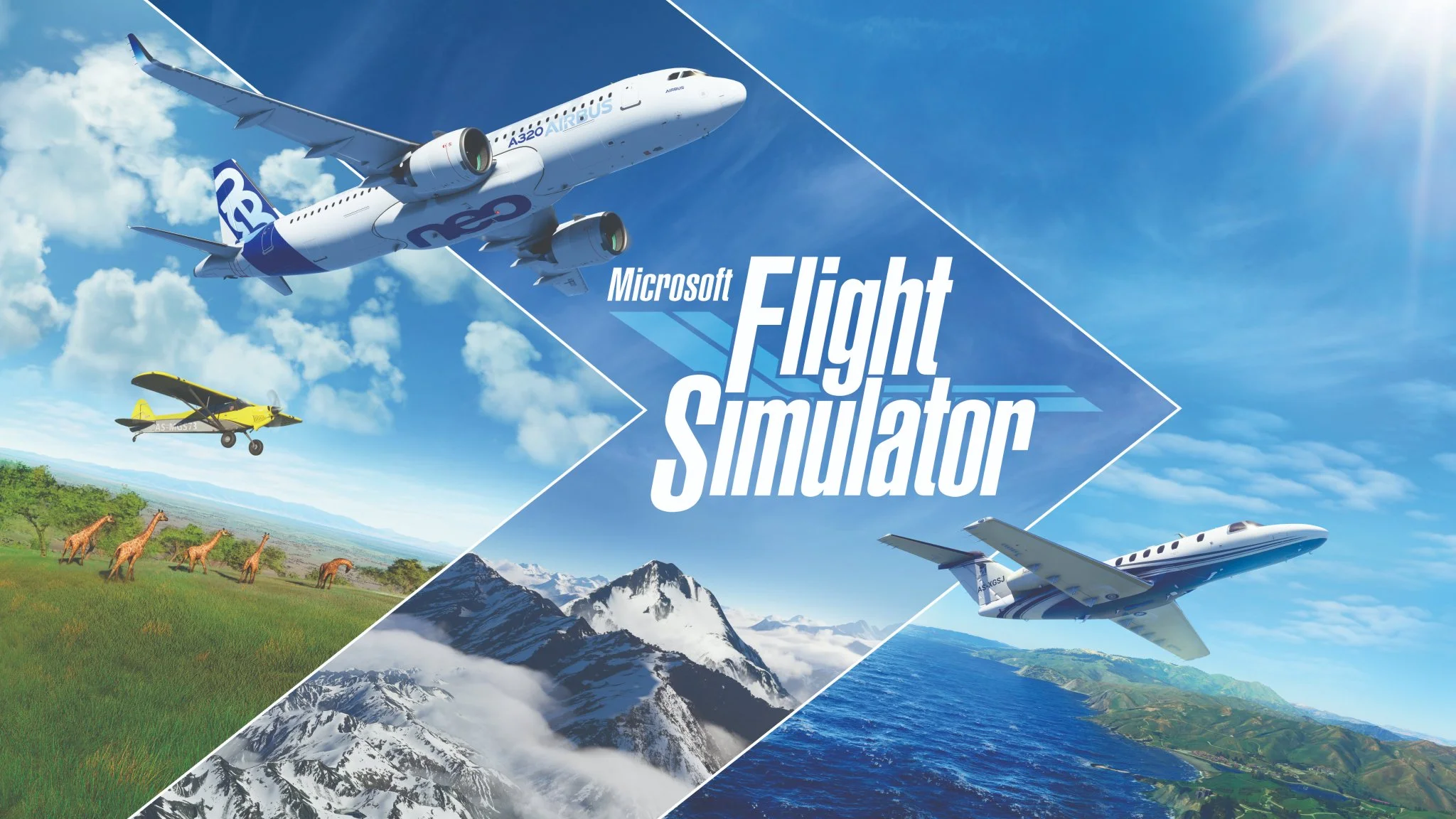Subscribe now for hand-picked best experiences, product discounts, and the latest VR trends, tips and tricks, straight to your inbox.
Key Takeaways
- VR flight simulators offers an immersive and realistic experience that allows users to soar through the skies from the comfort of their homes.
- A VR flight simulator can be used for both entertainment and training purposes, and has a growing popularity and potential future impact on the aviation industry.
- To get started with VR flight simulators, you need to have the essential hardware, such as a VR headset, a joystick, a throttle, and rudder pedals, and the software, such as Microsoft Flight Simulator, X-Plane 12, or DCS World.
- To advance your VR flight simulator skills, you can explore motion platforms, multiplayer sessions, and custom content creation.
Introduction
Have you ever dreamed of flying a plane, but never had the chance to do so in real life? Or maybe you are a pilot who wants to practice your skills without leaving your home? If so, you might be interested in VR flight simulation, a technology that allows you to experience the thrill of taking flight in a virtual world.
A VR flight simulator is a type of experience that uses virtual reality (VR) to create an immersive and realistic environment that mimics the conditions of flying an aircraft. VR flight simulators can be used for both entertainment and training purposes, as it provides a fun and engaging way to explore the world from the air, as well as a safe and cost-effective way to learn and improve your flying skills.
Flight simulation is not a new concept, as it has been around for decades in the form of flight simulators that use screens, projectors, and motion platforms to simulate the cockpit of an aircraft. However, VR flight simulators have become more accessible and popular in recent years, thanks to the advancement of VR technology and the availability of affordable and high-quality VR headsets.
VR flight simulators have also found its way into various industries, such as aviation, education, tourism, and entertainment, as it offers a range of benefits and opportunities for both users and businesses. VR flight simulators can help users to develop their spatial awareness, cognitive abilities, and motor skills, as well as to overcome their fear of flying, enhance their travel experience, and enjoy their hobbies. VR flight simulators can also help businesses to reduce their operational costs, increase their customer satisfaction, and innovate their products and services.
In this article, we will provide you with a comprehensive guide to VR flight simulators, covering everything you need to know about this exciting technology. We will discuss the hardware and software requirements, the learning process, the advanced features, and the future prospects of VR flight simulators. By the end of this article, you will be ready to take flight in virtual reality and experience the world from a new perspective.
Getting Started with VR Flight Simulation
Before you can take flight in virtual reality, you need to have the right hardware and software for your chosen VR flight simulator. In this section, we will explain what you need and how to set it up.
Hardware
The essential hardware components for your VR flight simulator to go along with your chosen VR headset are:
- A joystick: This is a device that you hold in your hand that controls the pitch, roll, and yaw of the aircraft. A joystick is the most common and intuitive way to fly a plane in VR, as it mimics the real-life control stick of an aircraft.
- A throttle: This is a device that you use to adjust the engine power and speed of the aircraft. A throttle is usually paired with a joystick to form a HOTAS (Hands On Throttle And Stick) system, which gives you more control and accuracy over your flight.
- Rudder pedals: These are devices that you use to control the rudder of the aircraft, which is responsible for the lateral movement and turning of the plane. Rudder pedals are optional, but they can enhance the realism and precision of your flight.
Amazon Affiliate Disclaimer:
This website is a participant in the Amazon Services LLC Associates Program, an affiliate advertising program designed to provide a means for sites to earn advertising fees by advertising and linking to Amazon.com. As an Amazon Associate, we earn from qualifying purchases. We get commissions for purchases made through links in this website. Amazon and the Amazon logo are trademarks of Amazon.com, Inc., or its affiliates.
There are different types of VR headsets available, each with their own advantages and disadvantages. The main types are:
| Type | Description | Pros | Cons | Examples |
|---|---|---|---|---|
| PC-based VR headsets | Require a connection to a powerful PC for VR software. | Best graphics, performance, and compatibility. | Most expensive and complex setup. | HP Reverb G2, HTC Vive Pro 2, Pimax Crystal |
| Standalone VR headsets | Do not need a PC or smartphone for VR software, but can be used on PC | Affordable, portable, and easy to use. | Lower graphics, performance, compared to PC-based headsets. | Quest 2, HTC Vive Focus, Pico Neo 2 |
| Smartphone-based VR headsets | Use a smartphone as the display and processor. | Cheapest and simplest option. | Lowest graphics, performance, and compatibility. | Google Cardboard, Samsung Gear VR, Google Daydream |
Choosing the right VR headset for your chosen VR flight simulator depends on your budget, preferences, and needs. Here are some recommendations based on different scenarios:
- If you want the best VR flight simulator experience possible, and you have a high-end PC and a large budget, you should go for a PC-based VR headset, such as the Pimax Crystal, which offers the highest resolution, refresh rate, and field of view of all VR headsets, as well as excellent tracking and audio quality.
- If you want a good VR flight simulator experience, and you have a mid-range PC and a moderate budget, you should go for a PC-based VR headset, such as the HP Reverb G2, which offers a balanced performance, comfort, and price, as well as a wide range of compatible software and accessories.
- If you want a decent VR flight simulator experience, and you do not have a PC or a large budget, you should go for a standalone VR headset, such as the Quest 2, which offers a wireless and convenient VR experience, as well as a decent graphics, performance, and compatibility, especially if you use the Oculus Link cable to connect it to a PC.
- If you want a basic VR flight simulation experience, and you only have a smartphone and a small budget, you should go for a smartphone-based VR headset, such as the Google Cardboard, which offers a cheap and easy way to try VR, but with a limited graphics, performance, and compatibility.
As for the other hardware components, such as the joystick, the throttle, and the rudder pedals, there are many options available from different brands and price ranges. Some of the most popular and reputable brands are Logitech, Thrustmaster, and CH Products. You should look for hardware that is compatible with your chosen simulator, as well as with your personal preferences and needs. For example, if you want to fly a specific type of aircraft, such as a fighter jet or a helicopter, you should look for hardware that resembles the real-life controls of that aircraft.
Related: Click Here to learn how to Take your FPS games to the next level
Which Flight Simulators Support VR?
Once you have the hardware, you need to have the software for VR flight simulation. There are many software options available for VR flight simulation, each with their own features and functionalities. Some of the most popular and well-known software programs are:
| Flight Simulator | Description | Key Features | Compatibility | System Requirements |
|---|---|---|---|---|
| Microsoft Flight Simulator | Released in 2020 by Microsoft, visually stunning and realistic simulation | Entire planet is explorable, diverse aircraft, dynamic weather, traffic. | PC-based VR headsets (Oculus Rift S, Valve Index) | Requires a NASA level PC |
| X-Plane 12 | Released in 2021 by Laminar Research, a highly realistic flight simulator with accurate physics and a wide range of aircraft. | Realistic flight model, diverse aircraft, weather. | PC-based VR headsets (HTC Vive, Oculus Rift S) | Requires a moderate PC |
| DCS World | Released in 2008 by Eagle Dynamics, this free to play flight sim focuses on military aircraft with authentic simulations. | Detailed military aircraft simulation, authentic weapons, dynamic and interactive world. | PC-based VR headsets (Oculus Rift S, Valve Index) | Requires an enthusiast grade PC |
Advanced VR Flight Simulator Features and Functions

Once you have mastered the basics of VR flight simulators, you can explore some of the advanced features and functionalities that can make your VR flight simulator experience even more enjoyable and realistic. In this section, we will discuss motion simulation, multiplayer flight simulation, and custom content creation.
Motion Simulation
One of the limitations of VR flight simulators is that it does not provide physical feedback to your body, such as the forces and vibrations that you would feel when flying a real aircraft. This can reduce the immersion and realism of your VR flight simulator experience, as well as cause motion sickness or discomfort for some users.
To overcome this limitation, you can use a motion platform, which is a device that moves your seat or your entire VR setup in sync with the movements of your virtual aircraft. A motion platform can enhance your VR flight simulator experience, as well as sim racing experience, by providing realistic physical feedback, such as the acceleration, deceleration, tilting, and shaking that you would feel when flying a real aircraft.
There are various types of motion platforms available for VR flight simulators, ranging from simple and affordable ones that only move your seat, to complex and expensive ones that move your entire VR setup. The main types are:
- Seat movers: These are motion platforms that only move your seat in different directions, such as up, down, left, right, forward, and backward. Seat movers are the cheapest and simplest option, but they also have the least range of motion and realism.
- Platform movers: These are motion platforms that move your entire VR setup, including your VR headset, joystick, throttle, and rudder pedals, in different directions, such as up, down, left, right, forward, backward, and rotation. Platform movers are more expensive and complex than seat movers, but they also have a greater range of motion and realism.
- Full motion simulators: These are motion platforms that move your entire VR setup, as well as provide additional features, such as a cockpit enclosure, a surround sound system, and a panoramic screen. Full motion simulators are the most expensive and complex option, but they also offer the highest level of motion and realism. Although when using VR, it may not make much sense to install screens in your cockpit setup, but if you’ve got an unlimited budget, who cares, right?
Choosing the right motion platform for VR flight simulation depends on your budget, space, and needs. Here are some recommendations based on different scenarios:
| Budget/Space | Motion Type | Recommended Product | Features | Cost |
|---|---|---|---|---|
| Small | Seat Mover | Next Level Racing Motion Platform V3 | Simple and affordable, adds motion without taking up much space, suitable for those on a small budget and limited space. | $3500 |
| Moderate | Platform Mover | DOF Reality H6 | More realistic and immersive, offers a greater range of motion and compatibility, suitable for those with a moderate budget. | $6948 |
| Large | Full Motion Simulator | VRX Flight Simulator | Ultimate realism with a custom built full cockpit enclosure, surround sound, and panoramic screen, suitable for those with unlimited budget. | Starting at $55995 |
Multiplayer Flight Simulation
Another way to enhance your VR flight simulation experience is to fly with other people in a virtual world. Multiplayer flight simulation allows you to interact and communicate with other VR flight simulation enthusiasts, as well as to participate in various activities and events, such as races, missions, and battles.
Multiplayer flight simulation can be a fun and engaging way to improve your VR flight simulation skills, as well as to make new friends and join a community of like-minded people. Multiplayer flight simulation can also offer a more dynamic and unpredictable VR flight simulation experience, as you never know what will happen when you fly with other people.
There are many online platforms that offer multiplayer VR flight simulation, each with their own features and functionalities. Some of the most popular and well-known platforms are:
- VATSIM: This is a platform that offers a realistic and professional multiplayer VR flight simulation experience, with a focus on air traffic control and procedures. VATSIM stands for Virtual Air Traffic Simulation Network, and it is a network of volunteers who provide live air traffic control services and guidance to VR flight simulation users. VATSIM also offers a realistic representation of the world’s airspace, traffic, and weather, as well as various events and training programs. VATSIM is compatible with VR flight simulator software such as Microsoft Flight Simulator, and X-Plane games, and requires a free registration and a microphone to join.
- DCS World: DCS offers various multiplayer modes, from cooperative missions where players work together to achieve objectives, such as escorting bombers, engaging in tactical strikes, or providing air support for ground troops, to dynamic combat servers with persistent online worlds and evolving storylines. Players can also hone their flying skills and showcase teamwork in synchronized flight demonstrations or aerobatic competitions, or even create unique missions using DCS’s mission editor, offering endless possibilities for collaborative gameplay. DCS’s multiplayer functionality goes beyond simply flying together. Features like voice communication, shared cockpits, real-time weather, and dedicated servers add an extra layer of realism and challenge to missions.
- IL-2 Sturmovik: This is a platform that offers a historical and combat multiplayer VR flight simulation experience, with a focus on World War II and the Cold War. IL-2 Sturmovik is a VR flight simulator software that also has a multiplayer feature, which allows you to fly with other IL-2 Sturmovik users in a realistic and immersive simulation of various historical battles and scenarios. IL-2 Sturmovik also offers a wide range of aircraft, weapons, and missions, as well as a realistic flight model, damage model, and physics.
Creating Custom Content
Another way to enhance your VR flight simulation experience is to create your own content for VR flight simulators, such as scenery, aircraft, and missions. Creating custom content can allow you to express your creativity and customize your VR flight simulation experience, as well as to share your work with other VR flight simulation enthusiasts.
Creating custom content for VR flight simulators can be challenging, but also rewarding and fun. There are various tools and resources available for creating custom content for VR flight simulators, each with their own features and functionalities. Some of the most popular and well-known tools and resources are:
- SDKs: These are software development kits that provide the official tools and documentation for creating custom content for specific VR flight simulator software. SDKs are the most comprehensive and powerful option, but they also require the most technical skills and knowledge. Examples of SDKs are the Microsoft Flight Simulator SDK, the X-Plane 12 SDK, and the DCS World SDK.
- Editors: These are software programs that provide a graphical user interface for creating custom content for VR flight simulators. Editors are more user-friendly and intuitive than SDKs, but they also have less features and functionalities. Examples of editors are the DCS World Mission Editor, the IL-2 Sturmovik Mission Editor, and the FSX Mission Editor.
- Add-ons: Also known as Mods, these are software programs that provide additional features and functionalities for VR flight simulators, such as new aircraft, scenery, weather, and effects. Add-ons are the easiest and simplest option, but they also have the least customization and originality. Examples of VR enabled Flight Simulators with mod support are MS Flight Simulator 2020, DCS: World, and X-Plane 11 and 12.
The Future of VR Flight Simulation
VR flight simulation is an exciting and innovative technology that has a lot of potential and possibilities for the future. VR flight simulation technology is expected to improve and evolve in the future, with better graphics, haptic feedback, and AI-powered instructors.
- Better graphics: With the release of Unreal Engine 5, VR flight simulation technology is expected to offer better graphics in the future, with higher resolution, frame rate, and realism. VR flight simulation technology will also benefit from the advancement of cloud computing and streaming, which will allow for more detailed and dynamic scenery, weather, and traffic, without compromising the performance and storage of the VR devices.
- Haptic feedback: VR flight simulation technology is expected to offer haptic feedback in the future, which is the sensation of touch and force that you feel when interacting with a virtual object. Haptic feedback will enhance the immersion and realism of VR flight simulation, as it will provide physical feedback to your hands, feet, and body, such as the resistance of the joystick, the vibration of the engine, and the impact of the landing.
- AI-powered instructors: VR flight simulation technology is expected to offer AI-powered instructors in the future, which are artificial intelligence agents that can guide and teach you how to fly a virtual aircraft. AI-powered instructors will enhance the learning and training aspect of VR flight simulation, as they will provide personalized and adaptive feedback, instructions, and tips, based on your performance and progress.
VR flight simulation technology also has a lot of potential applications and implications for the future, beyond entertainment and training. VR flight simulation technology can be used for various purposes and fields, such as research and development, tourism, and education.
- Research and development: VR flight simulation technology can be used for research and development, as it can provide a safe and cost-effective way to test and experiment with new aircraft designs, systems, and features, without risking the lives and resources of real pilots and planes. VR flight simulation technology can also provide a realistic and accurate data and feedback, which can help to improve and optimize the performance and efficiency of the aircraft.
- Tourism: VR flight simulation technology can be used for tourism, as it can provide a unique and exciting way to explore and experience different places and cultures from the air, without leaving your home or spending a lot of money. VR flight simulation technology can also provide a more immersive and interactive way to enjoy the scenery and landmarks of the world, as well as to learn about their history and significance.
- Education: VR flight simulation technology can be used for education, as it can provide a fun and engaging way to learn and teach various subjects and skills, such as geography, physics, and mathematics, as well as to inspire and motivate students to pursue their interests and passions in aviation and technology.
VR flight simulator technology is a fascinating and promising technology that has a lot of potential and possibilities for the future. VR flight simulator technology will continue to improve and evolve, as well as to impact and influence various industries and fields. VR flight simulator technology will also continue to provide a thrilling and rewarding experience for VR flight simulation enthusiasts, as well as to attract and inspire new generations of VR flight simulator users.
Conclusion
In this article, we have provided you with a comprehensive guide to VR flight simulation, covering everything you need to know about this exciting technology. We have discussed the hardware and software requirements, the learning process, the advanced features, and the future prospects of VR flight simulation. By the end of this article, you should be ready to take flight in virtual reality and experience the world from a new perspective.
VR flight simulation is a technology that offers an immersive and realistic experience that allows you to soar through the skies from the comfort of your home. VR flight simulation can be used for both entertainment and training purposes, and has a growing popularity and potential future impact on the aviation industry.
We hope that this article has helped you to understand and appreciate the world of VR flight simulation, and that you will enjoy and benefit from this technology. We encourage you to explore the world of VR flight simulation and experience the thrill of taking flight in a virtual world.
Subscribe now for hand-picked best experiences, product discounts, and the latest VR trends, tips and tricks, straight to your inbox.



Leave a Reply